In Uganda’s northwestern city of Arua, a good Sunday best must always be accompanied by a touch of African print, locally known as Kitenge. The multicolored fabric, rumored to be owned by each of its more than 360,000 population.
For a long time, Arua has been a melting point of cultures because of its strategic position between two Ugandan neighbours: The Democratic Republic of Congo and South Sudan.
According to residents of the border city, for years, Kitenge has been the biggest fashion export from neighboring Democratic Republic of Congo (DRC), whose official border point with Uganda is less about 5 kilometers from the city center, while other unmarked entry points are scattered all over, and in less than a kilometer.
To pinnacle it all, it is being ruled by a cross-generational team of women whose style and eye for detail have provided the fabric a perfect definition.
Joyce Kamure, 46, originally from the DRC, arrived in Arua in August 2005, then a rapidly urbanising town with a growing middle class. Upon her arrival, she realised something was missing in its social fabric.
“I felt that fashion and style were missing. So, I started in a small kiosk with other women who I found working as tailors. Tailoring was the work I was doing in the DR Congo, but on a small scale. I would import material from traders in Kampala and make dresses and shirts. People loved them,” Kamure explains.
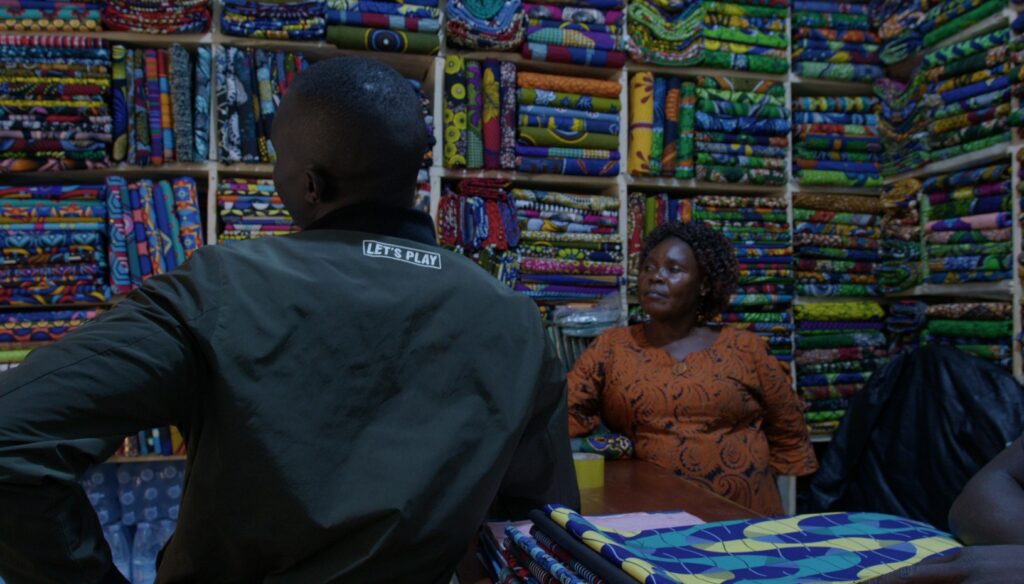
Joyce Kamure at her store in Arua Fabric Market.
By that time, she was operating from a small room on the sidelines of Arua Central Market. Many other fashion-enthusiastic women from the DRC would start to join her.
In no time, women from Arua’s vibrant cross-border community had become a household name in the city’s fashion lifestyle. Now, city authorities have established a fully fledged textiles market, which is emerging as a key revenue stream.
In East Africa, the Congolese people are known for their bold, vibrant, and flamboyant styles, with a stylish blend of traditional African designs and contemporary trends. This is what made Kamure and other tailors’ designs highly sought after.
“We immediately gained recognition and launched our new lives here, and since then, we have led the industry, helping women build their livelihoods and strengthening our entire community,” Kamure says.
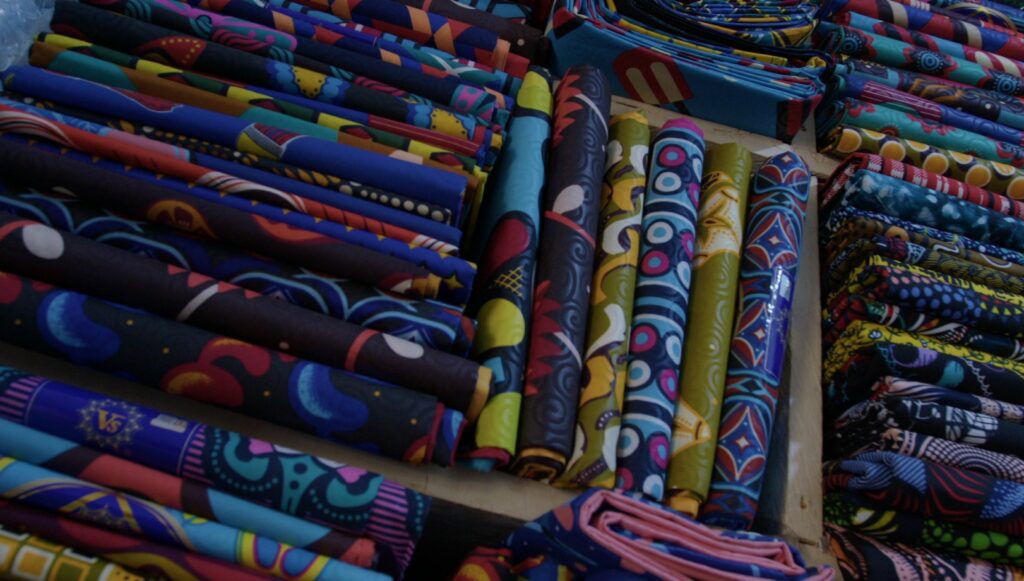
A set of Kitenge Fabric on display at a shop in Arua town. Customers come and make a selection of a perfect print.
This wave of opportunity has attracted thousands of women from the DRC and South Sudan, many of whom settled independently. Driven by expanding economic ties across borders, this growing community now numbers around 20,000 women contributing to Arua’s vibrant growth.
The Birth of a New Fashion Economy
When skilled artisans from eastern Congo arrived in Arua, many brought little more than their expertise. Some travelled for days with babies on their backs, crossing into Uganda full of hope and determination. During their journey, they carried family dreams and a willingness to rebuild
But they came with hands that knew how to work fabric, how to stitch, fold, and drape colour into meaning. They brought the Hambyard dressing culture, and little by little, that tradition began to appear in every corner of the city.
“Fashion and design have been our lifeline since we got here, and it has earned us a place in the society we now call home,” says Nabali Bangwe, a tailor from the DRC, as she takes a client’s measurements.
Across town, in the suburbs of Jako, a Fashion and Design training centre is run by Ronald Ndema, a renowned tailor who, after working closely with these talented women, decided to share their techniques with local trainees. It offers hands-on workshops in sewing, pattern drafting lessons, and guidance on running a small business.
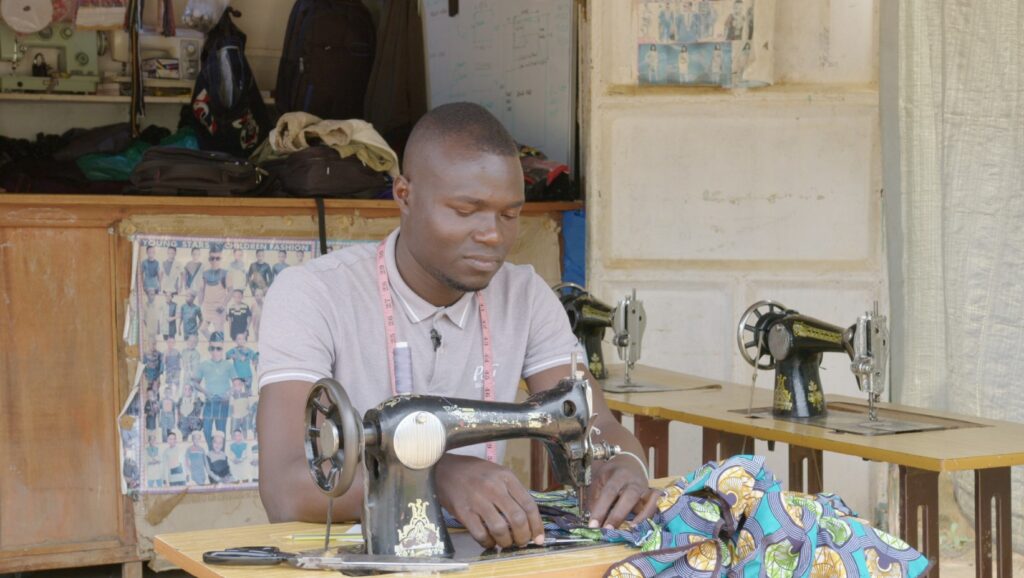
Ronald Ndema at his tailoring school that is giving space to young women to tap into Arua’s fashion market.
“Anyone can be a tailor. But these women brought a blend of culture and detail that has birthed a whole business in this town. The selling point of our prints here is the styles we employ in making them, which is what I am training,” explains Ndema.
A Beacon of Opportunity for New Arrivals
When 20-year-old Mary Juru’s family moved from South Sudan to Uganda, her schooling was interrupted by the resettlement process. In Arua, her parents pooled savings and community support to enrol her at Ronald Ndema’s Fashion and Design training centre. Determined to build a brighter future, they backed Mary’s passion for tailoring and design.
“Learning these skills gives me hope for a better future,” says Juru as she folds purple Kitenge at her sewing station equipped with both electric and pedal machines. “What I learn here will travel with me back to my community in South Sudan and across the region. I know I can create jobs and inspire others.”
Over the past decade, the West Nile region, home to Arua City, has become a magnet for skilled women eager to join its booming fashion market. Many arrive specifically to train in tailoring, source vibrant Kitenge, and launch their own boutiques or workshop collectives. Local networks link women moving across the border with experienced mentors, micro-financiers, and shared workspaces where they can hone techniques and build client bases.
Uganda has long welcomed these entrepreneurs, offering integration pathways through work permits, language programmes, and artisan markets. It now hosts over 1.7 million people from around the world, including large communities from South Sudan, the DRC, Sudan, Eritrea, and Somalia.
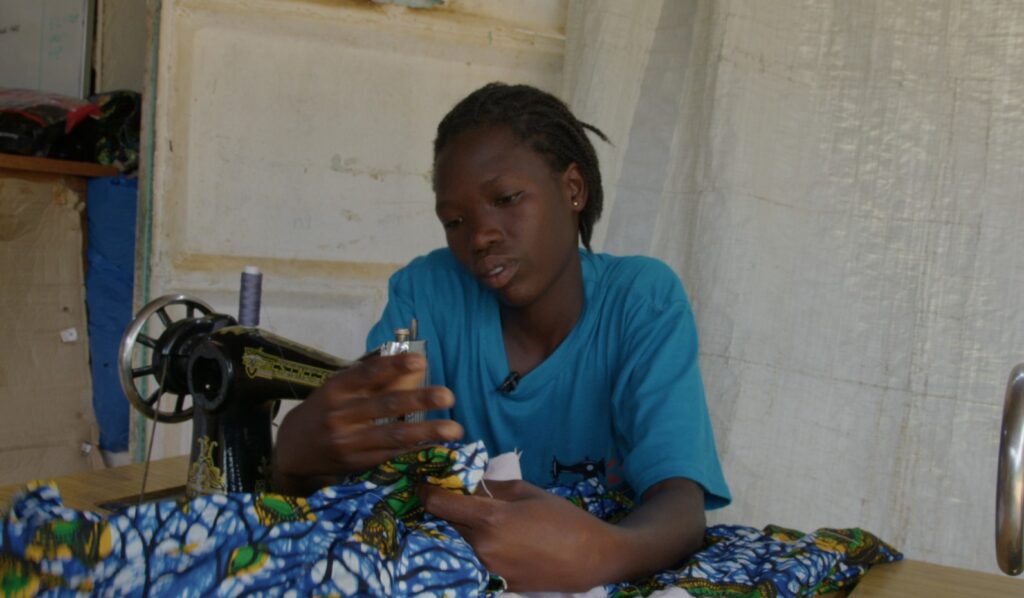
Marry Juru, migrated from South Sudan. She is under training at Ndema’s fashion school.
In Arua, nestled between two international borders, these women are celebrated as vital contributors to the city’s social and economic fabric. Local businesses routinely recruit their tailoring and design talents, and market days pulse with multilingual chatter, colourful fabrics, and the shared optimism of women pursuing fresh opportunities.
Arua’s vibrant and diverse population includes a large number of South Sudanese women, making up around 68.9 per cent of its community. They are joined by others from the Democratic Republic of Congo, Sudan, and surrounding countries.
Many see Arua as a city full of promise. A recent survey found that 92.4 per cent of people who move to Arua plan to stay and build their lives here in the near future.
“This place has offered us more than we ever imagined,” says Juru, gently guiding her fabric under the sewing machine.
Uganda’s supportive policies make it possible for people from different countries to work and contribute. Still, access to stable employment in Arua is steadily developing. At present, about a third of the people moving to Arua are engaged in income-generating activities.
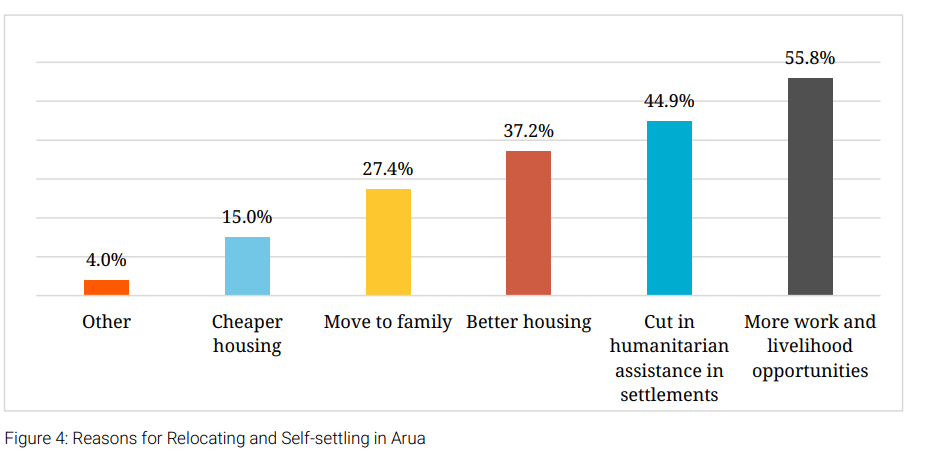
For women, the fashion and tailoring sector has become a key stepping stone. Although gaps in access to formal jobs remain, ongoing efforts aim to strengthen support systems, grow women-led ventures, and create inclusive spaces where their skills and creativity can thrive.
Economic insecurity continues to be a pressing issue in Arua. Only one in three people is currently engaged in work, and about a quarter report having no income at all.
Many families have already depleted their savings and now depend heavily on relatives and community networks for support. While some manage to get by through small trading activities, the lack of stable employment has kept many trapped in a cycle of financial hardship. Opportunities for livelihood support remain limited. The presence of organisations offering economic empowerment programmes is still low, which means many people have to navigate these struggles with minimal institutional help. Even with Uganda’s progressive laws that allow all people from around the world to work, the practical reality is that jobs are few and far between, especially for those starting afresh.
Yet despite these barriers, many people in Arua continue to show remarkable resilience. Self-settlement is increasingly being seen as a pathway to independence, giving individuals and families the space to work towards stability. However, integrating into urban systems comes with its own set of challenges, from acquiring proper documentation to understanding how to access the limited resources available.
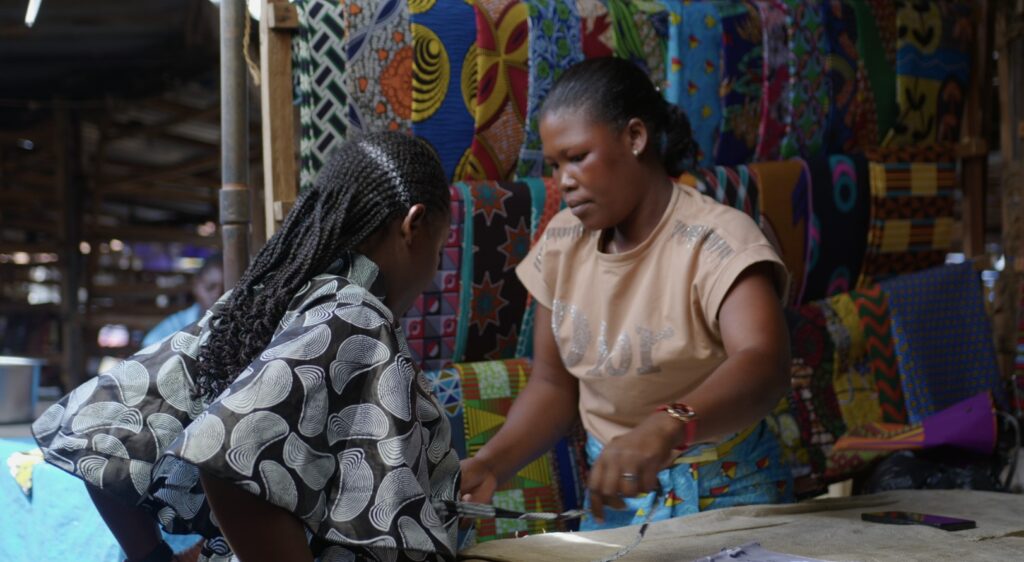
A tailor helps a client try out a recently made kitenge blouse.
Among the hurdles that still require attention are academic recognition, professional certification, and language support. People coming from Sudan, for instance, may have qualifications but struggle to have them recognised. This limits their chances of securing meaningful employment in the fields they trained for. Even so, the tide is slowly turning. The growing fashion market in Arua has sparked an economic shift that many are now tapping into. This new wave is providing a platform not just for work, but also for growth and creativity.
Ndema’s fashion school is one example. It has become a stepping stone for many young South Sudanese women who are now moving to Arua to acquire skills that can support their future. “Most of my clients and trainees are South Sudanese,” Ndema shares. “And once they finish, they go back home and encourage others to come here to learn.”
This ripple effect is powerful. Many women return to their communities and start their own businesses or join tailoring shops. The skills they acquire don’t just benefit them; they lift entire families and neighbourhoods. In 2016, the city even opened a textile market to meet the growing demand, now employing over 500 workers, many of them women from South Sudan and DR Congo. Kamure, once a tailor, now supplies fabric across the region. “Arua gave me a start. Now, I run wholesale,” she says with a smile.
Kamure is one of many entrepreneurs who have tapped into the growing demand for Kitenge in Uganda. She explains that the perception of Congolese Kitenge as being of higher quality has made it particularly desirable. “We often tell our customers that the materials come from Congo because they trust the quality more,” says Joyce.
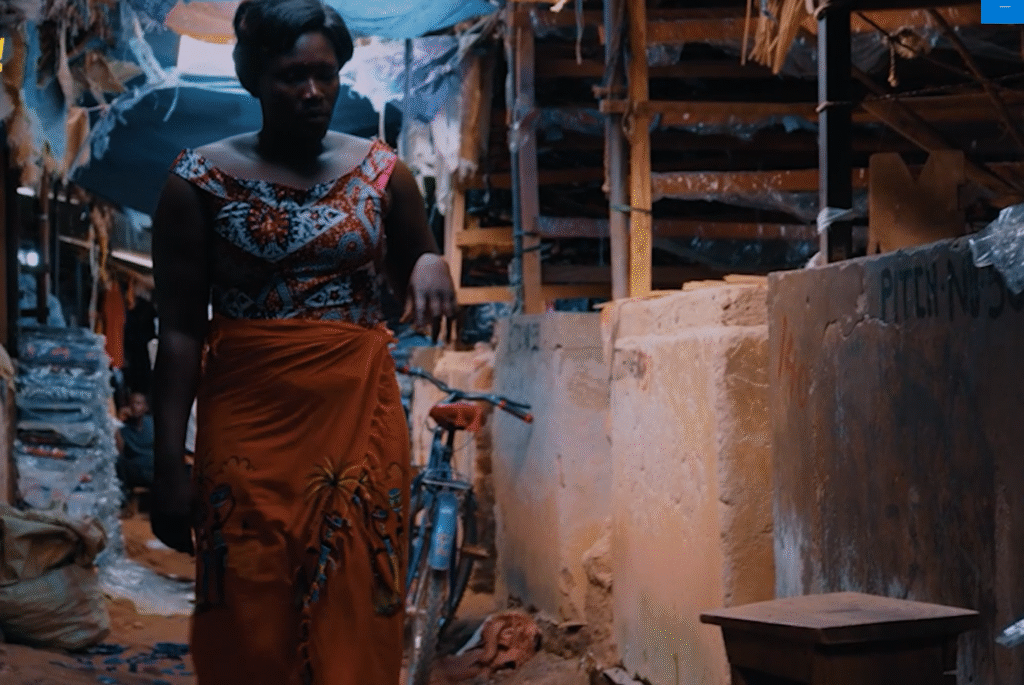
A woman in Arua walks through the market fully dressed in kitenge.
She also notes that many customers, especially from South Sudan, buy Kitenge for personal use, but their fashion preferences have evolved over time. Styles and colours now reflect a blend of cultural influences, driven by increasing interaction between communities. Movement across borders has played a big role in shaping this creative exchange. As people travel, so do their tastes, skills, and traditions. This kind of regional mobility fuels economic and cultural growth in towns like Arua. Beyond trade, the freedom to move and connect across countries is vital for Africa’s future. The African Continental Free Trade Area (AfCFTA), signed by over 27 countries, has opened new markets and business possibilities. But real progress also depends on easing people’s movement across borders.
Trade and travel go hand in hand. You cannot unlock economic growth, create jobs, or build strong partnerships unless both goods and people can move freely. The biggest obstacle is not roads or resources. It is trust. Many governments still hesitate to open their borders due to outdated fears or internal pressures. But unlocking true cooperation calls for a shared commitment to growth, trust in neighbours, and a bigger vision for Africa. For towns like Arua to thrive, there must be space for people to move, build careers, and bring their skills into local industries. Many traders, especially women, rely on access to markets across borders to sustain and grow their businesses.
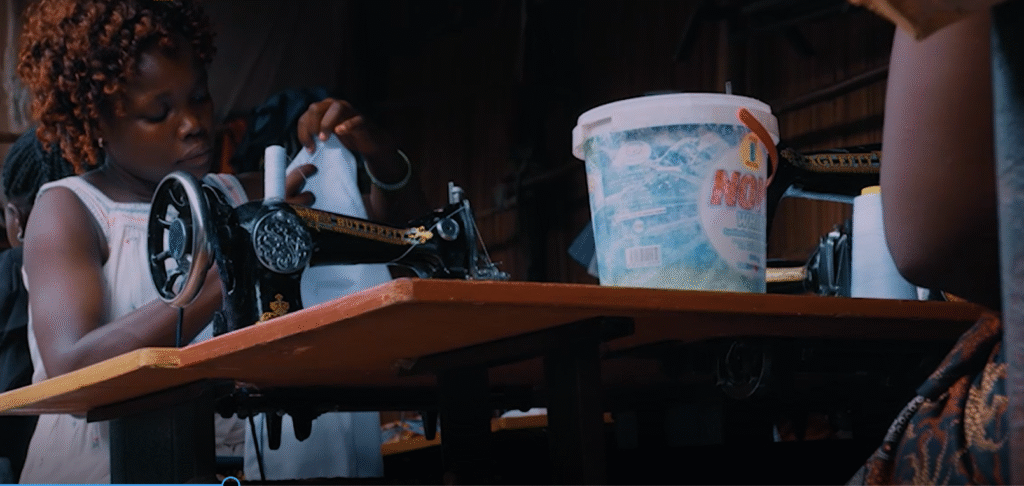
A tailor prepares to sew a cloth at the fabric market in Arua.
“Free movement supports the heart of local trade. Many women who sell Kitenge or food items travel to meet suppliers or reach more customers. Limiting this movement cuts them off from opportunity,” says Sydney. When movement is open and encouraged, it not only grows markets but also strengthens ties between communities. The story of Kitenge is a great example—fabrics from Congo, Sudan, and Uganda are sewn into fashion that celebrates shared culture and creativity.
This blending of styles and stories creates lasting partnerships, friendships, and economic benefits. In many cases, it does more to foster peace and understanding than any policy or agreement. With open movement, towns like Arua become lively hubs of innovation and enterprise. They attract skills, build confidence, and inspire growth. The Kitenge boom is proof. The influence of Congolese fashion in Arua is clear. From bold colours and patterns to stylish cuts and embroidery, fashion trends from Mahagi and Aru have shaped how Kitenge is tailored, styled, and sold. Customers in Arua now look for designs that mirror the sharp cuts, layered outfits, and detailed embroidery popular in Congolese fashion culture.
Disclaimer: “This content is produced as part of the Move Africa project, commissioned by the African Union Commission and supported by the Deutsche Gesellschaft für Internationale Zusammenarbeit (GIZ) GmbH. The views and opinions expressed are those of the authors only and do not necessarily reflect those of the GIZ or the African Union.”
Recent News
© 2022 - Media Challenge Initiative | All Rights Reserved .


